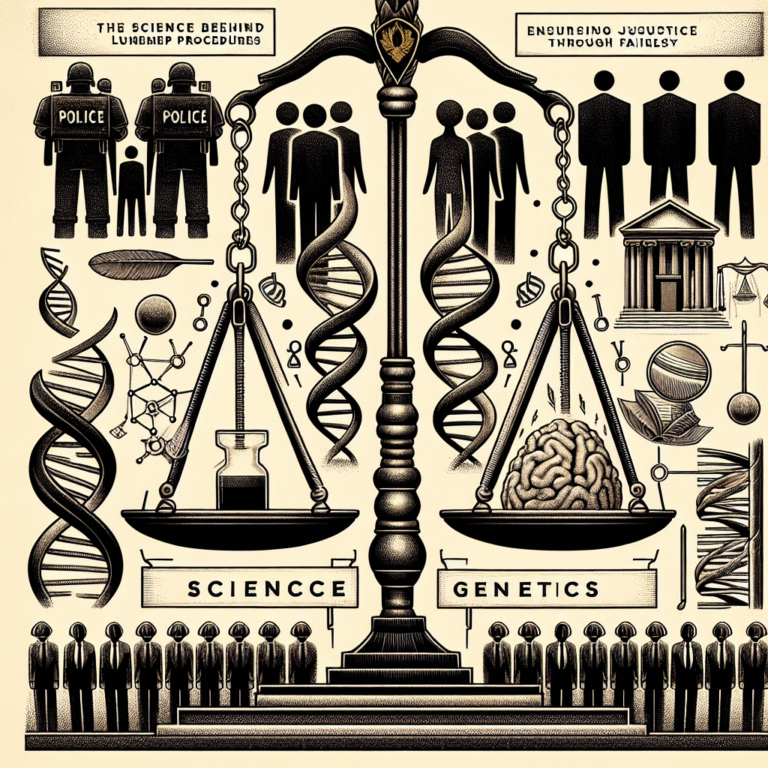Introduction
Imagine a future where the criminal justice system doesn’t just punish but rehabilitates. With recidivism rates soaring—where nearly two-thirds of released prisoners are rearrested within three years—it’s clear that the status quo is faltering. Breaking the Cycle: How Recidivism Prediction Models Can Transform Criminal Justice is not just a title; it’s a clarion call for change. In this article, we’ll explore how advanced predictive analytics can offer data-driven insights into recidivism, ultimately contributing to a more effective and humane justice system.
Understanding Recidivism and Its Impact
The True Cost of Recidivism
Recidivism isn’t just a statistic; it has profound societal implications. High recidivism rates burden communities, diminish public safety, and strain our already overtaxed criminal justice system. The economic costs associated with re-incarcerating individuals—housing, healthcare, and rehabilitation programs—can run into billions. For instance, the Vera Institute of Justice estimates the annual cost of incarcerating individuals in the U.S. is about $80 billion. The cycle doesn’t just affect individuals; it affects families, communities, and taxpayers.
Defining Recidivism Prediction Models
Recidivism prediction models employ statistical techniques and data-driven algorithms to assess an individual’s likelihood of re-offending. These models analyze various factors, including:
- Criminal history
- Demographic data
- Socio-economic background
- Mental health status
Understanding these variables allows stakeholders to tailor interventions and prevent re-offense. Breaking the Cycle: How Recidivism Prediction Models Can Transform Criminal Justice hinges on harnessing these insights to reform the existing system.
The Evolution of Prediction Models in Criminal Justice
Historical Context
The use of predictive models in criminal justice isn’t a new phenomenon. From the early recidivism studies in the 1930s, the field has evolved substantially. Prior to the introduction of sophisticated models, judges relied on personal judgment and bare statistics, often leading to biased decisions. Today, tools like COMPAS, developed by Northpointe (now Equivant), are used to assess recidivism risk, although the efficacy of these tools remains debated.
Technological Advancements
Machine learning and artificial intelligence have taken recidivism prediction to new heights. By leveraging vast amounts of data, these advanced algorithms can identify patterns that may not be apparent to human analysts. A 2020 study in the Journal of Criminal Justice highlights how machine learning models can achieve greater accuracy in risk assessments, significantly outperforming traditional methods.
Case Study: COMPAS
One prominent example is the COMPAS algorithm. Used in various jurisdictions across the U.S., COMPAS analyzes more than 137 variables to predict recidivism risk.
- Finding: A ProPublica investigation revealed that COMPAS disproportionately flagged Black defendants as higher-risk when they were actually less likely to re-offend, raising ethical concerns.
Despite its flaws, COMPAS underscores the need for constant refinement in predictive models and provides a critical case study in transparency and accountability within criminal justice systems.
Innovations in Recidivism Prediction
New Approaches and Models
Emerging models, such as those developed by the Laura and John Arnold Foundation, prioritize fairness and accuracy. Their Public Safety Assessment (PSA) leverages factors like age and current offense but intentionally excludes race and socioeconomic status to mitigate bias.
Implementing Predictive Models Across Jurisdictions
Cities like San Francisco and New York have begun leveraging these new models.
- Case Study: San Francisco’s Return-to-Custody Program: By using predictive analytics to identify individuals at high risk of re-offending, San Francisco has implemented tailored intervention programs, which have reportedly reduced recidivism rates by 24%.
Such programs emphasize rehabilitation and community support rather than punitive measures, leading to transformative change.
Challenges and Criticism of Prediction Models
Ethical Concerns
Despite their potential, recidivism prediction models are not without controversy. Critics argue that reliance on such data can perpetuate existing biases.
- Data Integrity: If the data is flawed or biased, the predictions will be as well.
Transparency in how algorithms are built and how data is interpreted is crucial for maintaining public trust.
Over-reliance on Algorithms
Another concern is the potential over-reliance on algorithms by judges and parole boards. The human element is vital.
- Case Study: An Example of Over-reliance: In several cases, judges have cited algorithm-generated recommendations without adequately considering personal circumstances, leading to unjust outcomes.
Breaking the Cycle: How Recidivism Prediction Models Can Transform Criminal Justice calls for a balanced approach, merging human judgment with data-driven insights.
Building a More Effective Criminal Justice System
Integrating Multi-faceted Strategies
To truly transform the justice system, the conversation must shift from merely data-driven methods to holistic strategies that incorporate:
- Mental health support
- Employment opportunities
- Education programs
Community Involvement
Community-based programs, drawing on local resources and insights, play a crucial role in risk mitigation.
- Case Study: Job Training in Boston: Boston’s job training initiatives have helped reduce recidivism rates among participants by over 30%.
This demonstrates that prevention strategies form an essential part of breaking the cycle.
The Role of Education and Rehabilitation
Importance of Rehabilitation
Education and vocational training programs are critical for reducing recidivism.
- Case Study: The Bard Prison Initiative: Offering college courses to incarcerated individuals, this initiative has a recidivism rate of just 2%. The program illustrates how education transforms lives and contributes to safer communities.
Integrating Prediction Models with Rehabilitation Strategies
By integrating insights from recidivism prediction models into rehabilitation programming, stakeholders can fine-tune the services provided to high-risk individuals.
Breaking the Cycle: How Recidivism Prediction Models Can Transform Criminal Justice relies not only on data but also on the commitment to transformation via rehabilitation.
Policy Recommendations
Advocating for Ethical Standards
For prediction models to be truly effective, ethical guidelines and standards are paramount. Policymakers must ensure that:
- Algorithms are regularly audited for bias.
- Stakeholders are educated on the limitations of predictive models.
- Transparency is prioritized, allowing communities to have a say in how data is used.
Collaborative Efforts
Collaboration among law enforcement, community organizations, and mental health professionals can create a comprehensive approach to reducing recidivism.
- Case Study: The Reentry Coalition in Seattle: This initiative involves multi-sector collaboration and has shown promising results in reducing recidivism rates.
By embracing a community-centered approach, we can create sustainable change.
Conclusion
Breaking the Cycle: How Recidivism Prediction Models Can Transform Criminal Justice is not merely an aspiration; it’s an achievable objective. By leveraging data responsibly, acknowledging limitations, and integrating humane rehabilitation strategies, we can reshape the landscape of the criminal justice system. Society has the power and responsibility to foster transformative change—one that prioritizes individuals, uplifts communities, and champions justice. It’s time to turn the tide and break the cycle of recidivism for good.
FAQs
1. What is recidivism?
Recidivism refers to the tendency of previously convicted individuals to re-offend, leading to rearrest, reincarceration, or return to criminal behavior.
2. How do recidivism prediction models work?
These models use historical data and statistical algorithms to assess an individual’s risk of re-offending based on various factors, such as criminal history, demographics, and socio-economic background.
3. Are recidivism prediction models effective?
When implemented correctly, these models can improve accuracy in assessing risk and tailoring interventions, but their effectiveness hinges on the quality of data and avoidance of inherent biases.
4. Can predictive models replace human judgment in the justice system?
No, while predictive models offer valuable insights, they should complement, not replace, human judgment. The complexity of individual circumstances requires nuanced decision-making.
5. What are some successful case studies of recidivism prediction models?
Programs like San Francisco’s Return-to-Custody initiative and the Bard Prison Initiative showcase effective applications of predictive analytics combined with rehabilitation efforts, leading to reduced recidivism rates.
By understanding and acting upon these insights, we can foster a future where justice is equitable, effective, and transformative.















